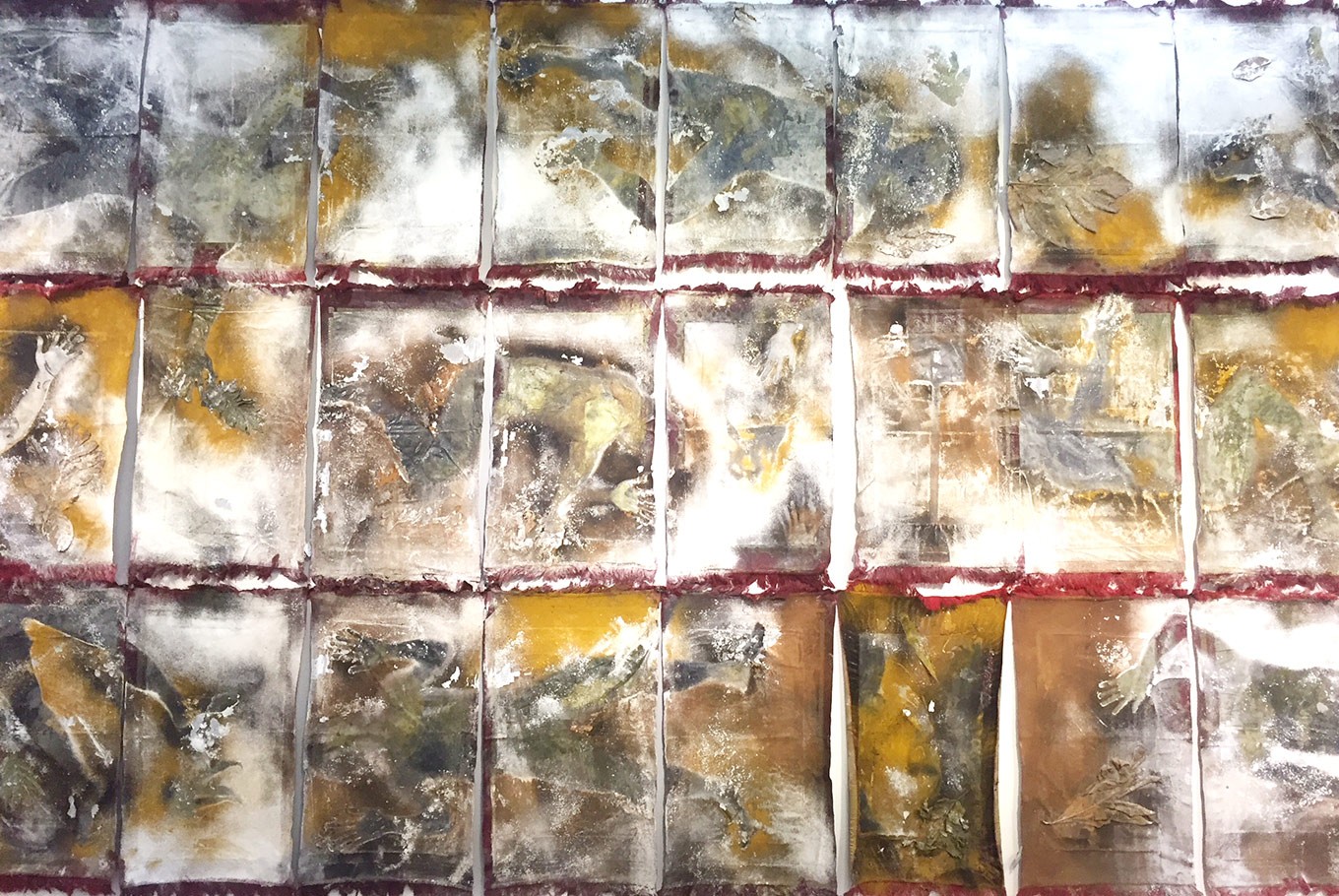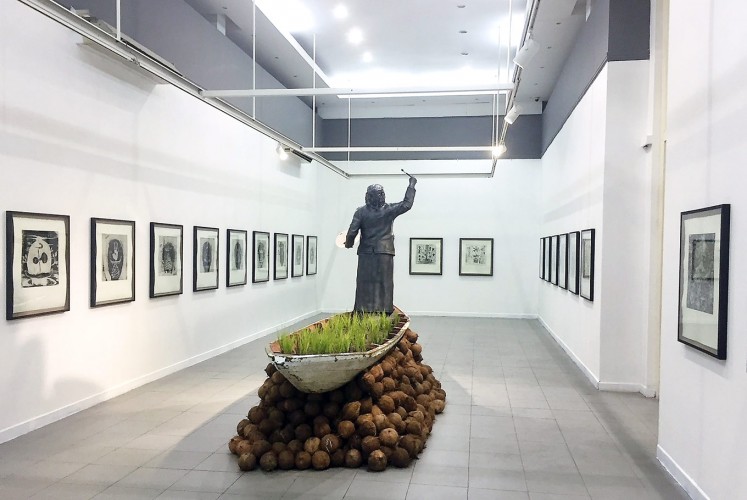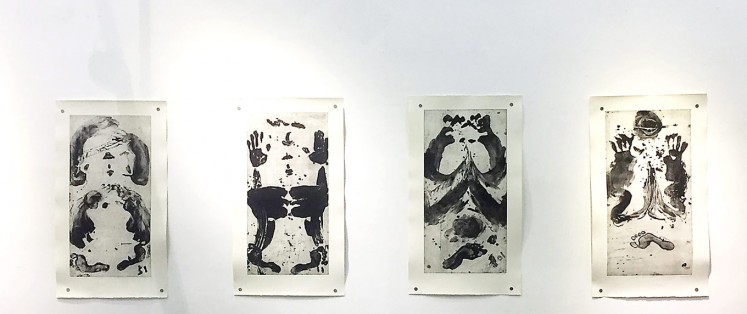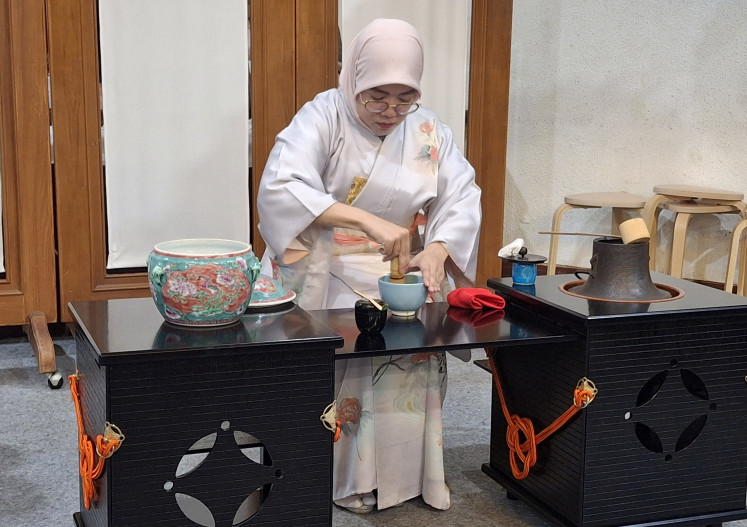Popular Reads
Top Results
Can't find what you're looking for?
View all search resultsPopular Reads
Top Results
Can't find what you're looking for?
View all search resultsTisna Sanjaya: Art as a solution to religious hypocrisy
“Potret Diri Sebagai Kaum Munafik” comes as another one of his scathing commentaries on the poison that humans can be.
Change text size
Gift Premium Articles
to Anyone
A
t the ripe old age of 60, veteran critical artist Tisna Sanjaya felt motivated to address the hypocritical actions that he had observed in the social and cultural environment around him.
Being held at the National Gallery of Indonesia in Gambir, Central Jakarta in collaboration with the Lawangwangi Creative Space of Bandung until July 21, Tisna’s exhibition “Potret Diri Sebagai Kaum Munafik” (Portrait of Ourselves as Hypocrites) comes as another one of his scathing commentaries on the poison that humans can be, this time displayed through the lens of religion and art.
The exhibition itself as a verbal idea is also constructed by the artist to invite those who realize the errors of their ways to reflect on themselves.
99 sajadahs (prayer mats) are displayed across the exhibition, with 33 of them laid firmly on the floor, bearing vague, convoluted patterns, akin to Rorschach blots that allow the visitor to interpret the meanings as they wish.
Tisna’s method is unique, seeing that he tries to incorporate his whole body into creating his work. As per the prayer ritual, he would kneel his paint-covered knees, face, torso and hands into the blank area and play around with whatever pattern was produced.
The results are numerous hanging sajadahs, all covered in the black, brown or ochre colors that he used to signify the dark meaning behind his exhibition. Only the deepest browns and the blackest of blacks are used in each piece as he aims to pressure the deep darkness of betrayal into his work.
By the brush: A figure that resembles artist Tisna Sanjaya towers in a hall lined with notions of negativity. (JP/Dylan Amirio)Through this vagueness, Tisna aims to explain the vague morality that exists between religion and the self. Religion, he feels, is an easy vehicle through which one can lose touch with common sense, and therefore he encourages a kind of betrayal of the self, which in turn could also lead to the betrayal of others through one’s supposed hypocrisy.
In the Muslim sense, munafik is the term given to people who hide their real sinful selves behind the disguise of religious goodness. Therefore, faith only becomes rhetoric, empty words without any real meaning aside from serving as a disguise for the wicked.
It is this allegorical antagonism that fuels conflict between one’s faith and the entire process of authority. Therefore, Tisna feels that religion would have part of its true meaning and true value restored if it welcomed art into the process.
Since art comes from essentially nothingness, the artist says it should be able to mold itself with religion without any due prejudice and would help break down the walls of hypocrisy due to the fact that art offers a return to nothingness, which is crucial for change to occur.
“Religion will be more human if art is incorporated within it,” Tisna says.
This is also seen through his views on the action of sholat (praying) itself as having an artful aesthetic, as it involves the complete surrender of the mind coupled with the involvement of the entire body in the process.
“Sajadahs are room for art,” he explains, highlighting the dialogues that take place on an artful sajadah between religion and art. “It is parallel with the dark places that hide within its form. The art comes from the pouring of prayers that the sajadah is subjected to, therefore making it a celebration of creative birth out of nothingness”.
Your Opinion Matters
Share your experiences, suggestions, and any issues you've encountered on The Jakarta Post. We're here to listen.
Thank you
Thank you for sharing your thoughts. We appreciate your feedback.













